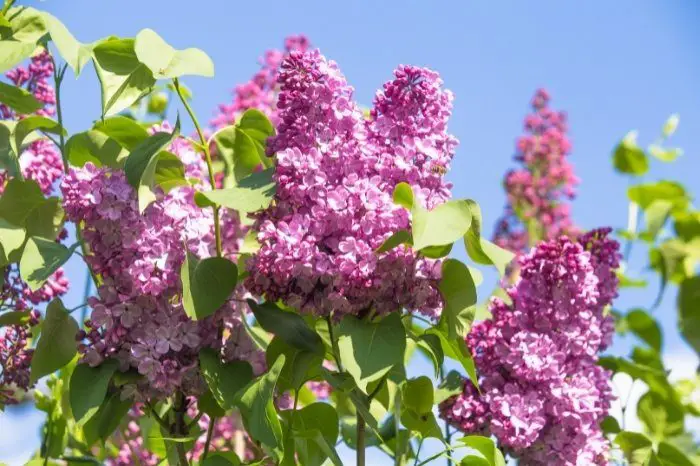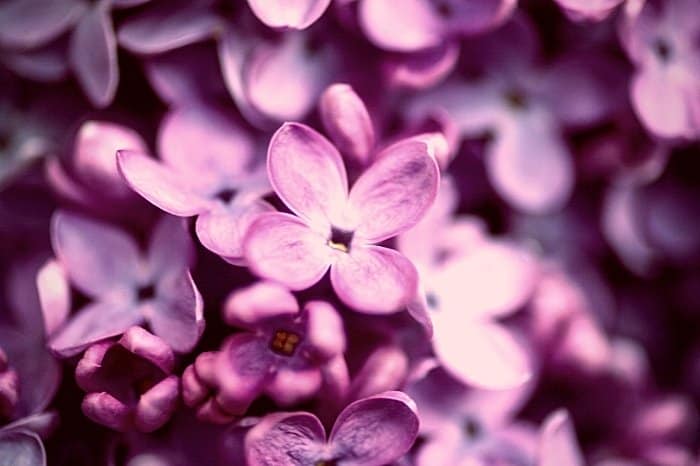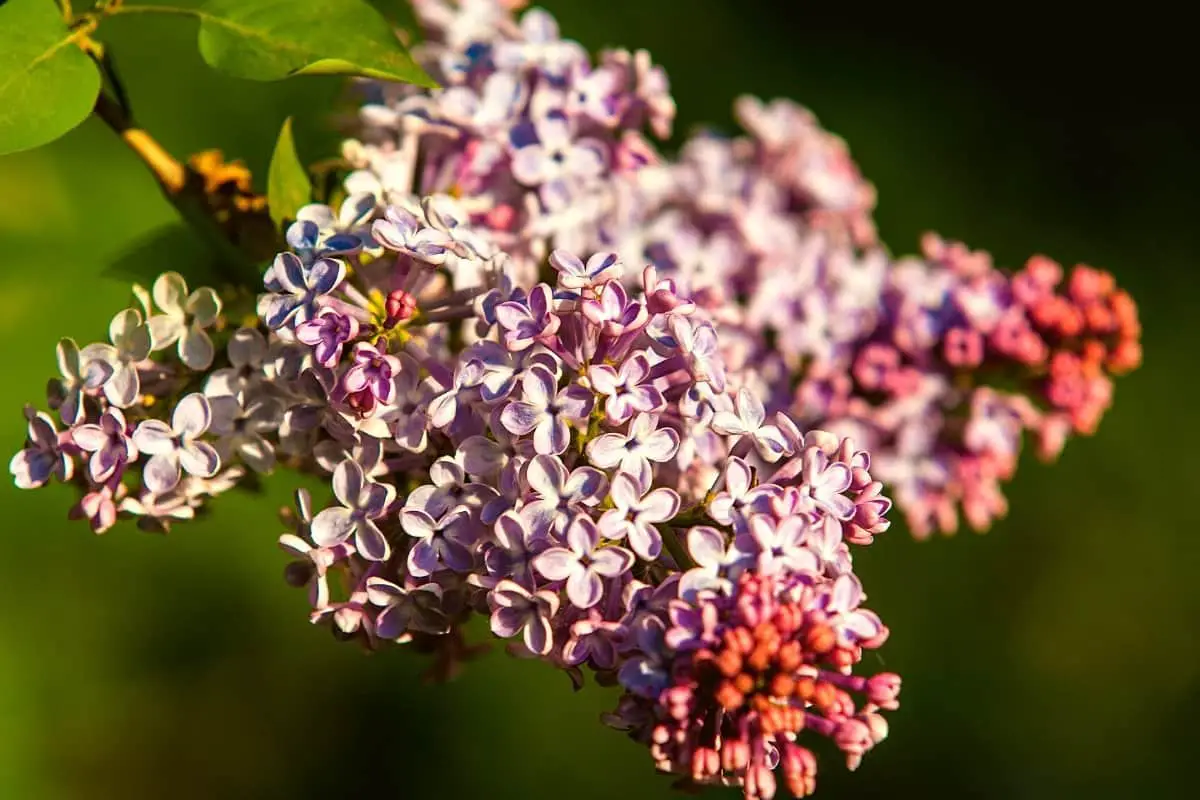Last Updated on January 31, 2022 by
Since the 1500s, lilacs have stood out as some of the most revered flowers for their abundant flower clusters, but where do lilacs grow?
The common lilac – Syringa vulgaris, or the French lilac is a member of the olive (Oleaceae) family.
Lilacs are spring plants thriving in cool climates. Most of its varieties, like the classic common lilac, do well in cold winter producing for the following spring.
Lilacs’ common relatives include jasmine, ash trees, vines, shrubs, privets, and forsythia bushes.
The common lilac is popular for ornamental landscaping with low maintenance under the right growing conditions.
Where Do Lilacs Grow?
Lilacs do well in cold climates but some cultivars have been introduced to grow in warmer climates.
Lilacs For Zone 5 to 7
Common lilacs are the old-fashioned lilacs that grow the biggest flowers with the best fragrance and longer-lasting blooms.
They only require chilly periods in winter thriving in zones 5 through 7. They are not appropriate as lilacs for zone 9.

Lilacs For Zone 9
If you ever want to grow lilacs in this zone, look beyond the common classic lilacs to the newer cultivars. With a little effort, your lilacs can thrive in USDA zones 8 and 9.
The most popular choices for zones 8 and 9 include
-
Blue Skies (Syringa vulgaris) – it produces highly fragrant flowers.
-
Excel lilac (Syringa x hyacinthiflora) – a hybrid that flowers earlier than other varieties with over 10 days. It normally grows up to 12 feet tall.
-
Cutleaf lilac (Syringa laciniata)
-
Lavender Lady (Syringa vulgaris) – this is originally from Descanso Hybrids. It was specifically made for Southern California’s zone 9 climates. This type grows into a small lavender tree, up to 12 feet tall and 6 feet wide. Descanso was also responsible for developing
-
White Angel (Syringa vulgaris) – was also developed by Descanso. This shrub has creamy-white lilac blooms.
-
Bloomerang – It is a new lilac from Proven Winners. It does well in zone 9 producing explosions of light or dark purple flowers in spring.
Zone 8 and 9 Lilac care are similar to those in the cooler areas. Plant these lilac varieties in a spot that has a full sun with moist, rich, well-drained soils and water regularly.
Little Known Facts About Lilacs
Lilac’s History Comes From The Greek
Lilac was an integral part of the story of the forest and fields gods (Pan) in the ancient Greeks. It is believed that Pan was in love with Syringa, a nymph. One day, as he was chasing her through the forest, she turned herself into a lilac shrub to hide because she was afraid of him. Pan found the shrub, picked it, and used part of it to create the first panpipe. Syringa’s name is the Greek word for pipe, and that’s where the lilac’s scientific name, Syringa, originated from.

Lilacs Were Used For Their Different Meanings In Different Cultures
To some, lilacs symbolize spring and renewal because they are early bloomers. The Celtics see lilacs as magical due to their sweet scent. During the Victorian age, lilacs symbolized old love – widows wore lilacs during this time. In Russia, lilacs are believed to bring wisdom to a newborn baby.
Lilacs Are In The Same Family As The Olive Trees
Lilacs belong to the Oleaceae family, which incorporates over 20 different plant species, that includes olives, jasmine, and ash. They have over 1,000 varieties of lilacs within their species, including some trees. Lilac trees like the Japanese tree lilac and Peking can grow to heights of over 30 feet.
Each Lilac Color Has A Different Meaning
Each lilac color has its own specific meaning. White lilacs symbolize innocence and purity; purple lilacs represent spirituality. If the bloom is more on the blue side of the color wheel, it represents tranquility and happiness. Magenta lilacs represent passion and love. The yellow lilacs, ‘Primrose’, is not a common one in American gardens, introduced in 1949, it’s not known to carry any meaning.
Lilacs Were A Presidential Favorite Flower
Lilacs’ origin is from Eastern Europe and Asia and later came to America in the 17th century. Although they were not American natives, they quickly grew in popularity with Americans. Former American Presidents George Washington and Thomas Jefferson grew lilacs in their gardens. These shrubs were also grown in America’s first botanical gardens.
Miracle-Gro Shake ‘N Feed Flowering Trees and Shrubs Continuous Release Plant Food
Lilacs Are Signs Of Old Homesteads
Lilacs are hardy in nature and live for long. Most lilac shrubs live for more than 100 years. Due to their life span, they often outlive the gardener who planted them. If you are driving along the country road and notice a few random lilac bushes, most likely there was a house or farm in that spot in the last century. If you are not growing them yet, try it. Not only will they bloom year after year, but they will also give you some colorful blooms and sweet scents.
Caring For The Common Lilacs As They Grow
The common lilac requires minimal care to thrive. Here are some critical things you need to give it:
-
Full or Partial Sunlight. Plant your lilac in a spot that attracts at least 6 hours of full sun every day. The shrub can also thrive in shade but it might not produce as many blooms like the ones under the sun. Note that there are also those varieties that do well in the cooler climates. Therefore, before you plant your lilacs find out what zones they do well.
-
Moist, Well-drained Soils. Common lilacs thrive in loamy, moist, well-drained, and neutral to slightly alkaline soils. The soil must drain well to avoid root rot that can kill these shrubs. During the excessively hot season, it’s best to water them on a timely routine even though they can tolerate the occasional drought.
-
Fertilize. Before adding any fertilizer, test your soils. Add the fertilizers only if the soil shows a need for a certain nutrient. You might not need to fertilize your lilac for several years. Excess nitrogen could harm this shrub.
-
Prune. Lilacs need good air circulation to keep away certain diseases. Pruning helps keep the shrub in good shape, size, and general health. These shrubs can grow from up to 20 feet tall and 12 feet wide depending on the variety.
Conclusion
Lilacs come in many different varieties, do not shy away from trying new varieties to see how they perform in your zone.
Moreover, once they bloom, you can enjoy these beauties as they brighten up your dull day. Have a lilac-full day, won’t you?
FAQs
Where do lilacs grow naturally?
Lilacs are a type of flowering plant in the genus Liriodendron. They are native to North America, and most of the species are found in eastern North America. According to the National Park Service, the native range of Lilac is from southern British Columbia and Alberta to California and Oregon.
The term lilac refers to a variety of shrubs and trees in the genus Lilium, which include species such as Lilium longiflorum (lily of the valley) and Lilium martagon (martagon lily).
Where did lilac trees originate?
The lilac tree is native to the Mediterranean, and is considered one of the most important cultural symbols of Europe. The flower is used in a wide variety of traditional folk crafts and celebrations across Europe. It has been cultivated in China since at least the third century BCE, when it was mentioned in a chapter of the medical book, “The Classic of the Materia Medica.” In the Middle Ages, it became an important part of the floral decoration of European churches.
Can lilacs grow in the South?
If you want to grow lilacs in the South, you will need to have a climate that is at least partially subtropical. This means that you are not going to be able to get a good crop of blooms from them in the middle of a New England winter. You will also need a location where the average temperature is above freezing, and you are going to need at least six hours of daylight.
Where is lilac flower found?
Lilac flowers can be found in many different places. In the UK they are often found on waste ground, parks, gardens, orchards and even on beaches.
In the US they are often found growing along roadsides or in backyards.
What does the lilac symbolize?
The lilac symbolizes purity, modesty and virtue. In the Middle Ages, the flower was used to decorate the graves of the nobility because it was believed that the scent of the flower would protect them in their afterlife. This belief was later extended to all of the faithful.
In the United States, the lilac is commonly associated with springtime. It is the first flower to bloom in spring and can be found in abundance on lawns, roadsides and along fences and railroads. The plant is also associated with the memory of a loved one who has passed away. Lilacs are extremely hardy plants.
Caroline is a gardener who loves to get down to the nitty–gritty of gardening. She proudly proclaims herself as a ‘dirt worshipper‘ and can often be found deep in the garden, covered in soil and singing to her plants. As a self–proclaimed ‘plant whisperer‘, Caroline believes that plants need love and attention just like any other living thing, and she loves to give them both. When she‘s not tending to her garden, you can often find her researching the latest gardening trends, or teaching others how to make their gardens thrive



